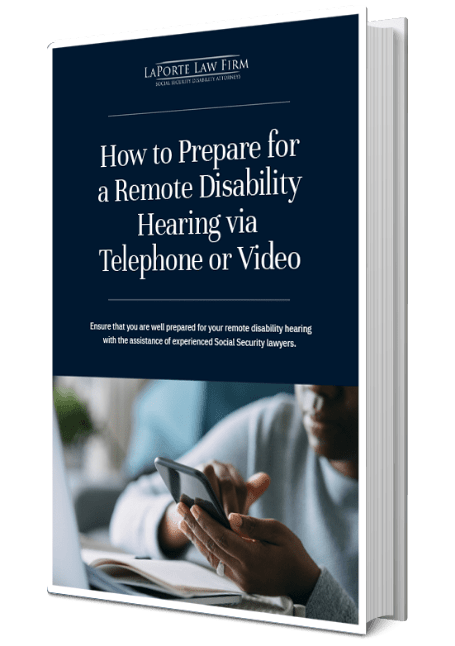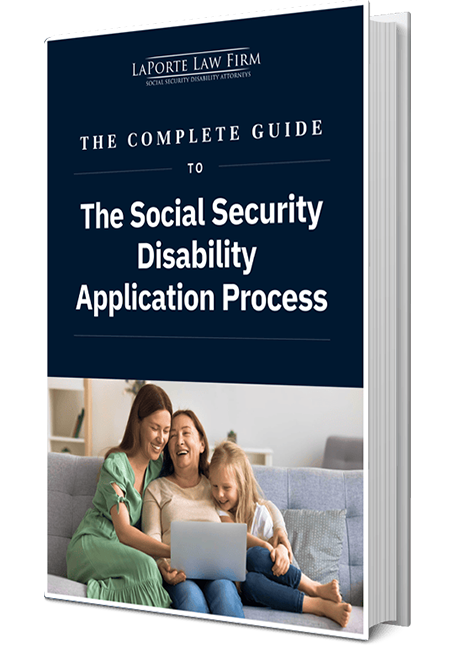
Are you approaching your 50s and feeling uncertain about the future of your Social Security disability benefits? Have you ever wondered how your age might impact your eligibility and the review process for these critical support programs?
The Social Security disability system is designed to support individuals who are unable to work due to debilitating conditions. However, as we age and the qualification criteria changes, the requirements for disability benefits can become increasingly confusing. Many individuals find themselves faced with reviews that can seem daunting, especially for those over age 50 when health issues may start to compound and the need for assistance becomes more pressing.
Understanding the nuances of Social Security disability reviews after age 50 is crucial for protecting your financial stability. In this article, we’ll explore the key aspects of Social Security Disability reviews after 50 and highlight the critical steps to ensure your benefits remain intact.
Overview of Continuing Disability Reviews (CDRs)
Once you are on disability benefits, the Social Security Administration (SSA) will periodically review your medical impairments to determine if you still have a disabling condition. If the SSA determines you are not disabled anymore, your benefits will stop. If your health has not improved or if your disability prevents you from working, your benefits will continue.
The review Process explained
After a disability claim is approved, the SSA conducts periodic Continuing Disability Reviews. When a CDR occurs, the SSA will reach out to you to obtain updated information about your condition using the SSA-454 form or the SSA-455 form. Those who receive the SSA-455 now have the option to complete the Disability Update Report (SSA-455) form online.
Your disability award notice will tell you when you can expect your first medical review.
Frequency and timing of reviews
The frequency of the review is dependent upon how likely it is your condition will improve. Here are the different review classifications used by the SSA to designate when an approved case will be reviewed:
- Medical improvement expected (MIE): The SSA will normally review your medical condition within 6–18 months after issuing a decision on your claim.
- Medical improvement possible (MIP): The SSA will review your medical condition about every three years.
- Medical improvement not expected (MINE): The SSA will review your medical condition about every seven years.
Please keep in mind that these reviews are not automatic. The SSA has acknowledged a history of backlogs in conducting CDRs, so your review may be delayed or outside the timeline of a standard review.
How CDRs Operate for Older Recipients
Age is a very important factor to consider when the SSA determines whether your condition is expected to improve, if medical improvement is possible, or if medical improvement is not expected. The older a person is and the closer they are to retirement age, the more likely that their review process will be set at MINE. Generally, individuals who are of advanced age (age 60 or older) will be placed in the MINE category.
You can also be placed in different categories as you get older. Under the regulations, if you were initially placed in the MIP or MIE category and you are now 54.5 or older, you will be placed in the MINE category. If you are under age 54.5, you will only be placed in the MINE category if you were initially in the MIP category and you have certain case characteristics (such as impairment, onset or medical listing characteristics) that make the MINE criteria appropriate.
Implications of Turning 50 on Disability Evaluations
When an individual reaches age 50, the Social Security Administration places increased emphasis on vocational factors in disability evaluations. This can significantly influence the determination of whether or not someone is considered disabled.
If you are under the age of 50, the SSA does not consider that your age will impact your ability to adjust to other work. However, if you are closely approaching advanced age (age 50– 54), the SSA will consider your age as a factor that may seriously affect your ability to adjust to other work in the national economy. If you are advanced age (age 55 or older), the SSA understands that your age significantly affects your ability to perform other work. The SSA also has special rules for persons in this category who are age 60 and above, closely approaching retirement age. These are called the GRID Rules.
The SSA’s GRID Rules also reflect how aging affects medical conditions. As people age, their, neurological, musculoskeletal, and sensory systems can worsen. As a result, age and aging medical conditions are used as a factor when determining whether medical improvement will occur.
Keep in mind that the CDR process is a more favorable review standard. During a CDR, the SSA presumes that you are still disabled, and the burden shifts to the SSA to determine if your condition has improved to the point where you can now perform full-time work. During this process, the SSA typically does not “reopen” the previous favorable determination and will only review records to determine if your condition has recently improved since the prior determination.
Potential Outcomes of a CDR
Depending on the review’s findings, several outcomes are possible, impacting your continued receipt of disability payments.
Continuation of benefits
If the SSA determines you are still disabled, your benefits will continue. The SSA may also set a new medical improvement diary date. As you get older and you get closer to retirement age, your diary may be changed from medical improvement expected to medical improvement possible or medical improvement not expected.
Termination of benefits
If the SSA determines that you are not disabled, they will send a notice explaining that your benefits will be terminated. If you disagree with the SSA’s determination and believe you are not able to work due to your disability, you have the right to appeal the SSA’s unfavorable medical determination.
If you want your disability benefits and medical coverage to continue while your appeal is pending, you must elect to continue benefits within 10 days of receiving the unfavorable determination. If you are successful in your appeal, your benefits will continue. If not, the SSA will issue an overpayment notice and you may need to pay the SSA the benefits you were paid while your appeal was pending.
When appealing a denied Social Security disability claim, you’ll go through four stages:
- Reconsideration
At the reconsideration stage, an adjudicative team or designated person will do a pre-hearing review to review whether your disability has continued. You may have an in-person or virtual hearing with a hearing officer - Hearing by an administrative law judge (ALJ)
Upon denial of your request for reconsideration, you will have 60 days to request a hearing with an ALJ. Being prepared for the hearing is crucial, as this is your opportunity to present the evidence of your case and testify before the ALJ to explain how your disability impacts your ability to work. - Appeals council (AC) review
Following an unfavorable decision by the ALJ, you will have 60 days to file a request to the appeals council to review your claim. However, it’s not guaranteed that you’ll be granted another hearing. If, however, you are granted an additional hearing, your case will either be resolved or you will be required to face an ALJ again. - Federal court review
If you are unsuccessful in the appeals council stage, the next step will be to file a federal suit with the Federal District Court. If you are considering a suit in federal court, you should consult with an experienced attorney who has experience representing claimants in your district court.
Essential Considerations for Those Undergoing Reviews
For a successful Social Security disability review, carefully consider these important factors:
Submit the required forms
According to SSA policy, if your condition is not likely to improve, the SSA will send you the SSA-455 form. This is the SSA Disability Update Report, also known as the “short form.” If your medical condition is likely to improve, the SSA will send you the SSA-454. This is the Continuing Disability Review Report, or the “long form.”
These forms need to be completed and submitted back to the SSA promptly. Failure to respond can lead to a termination of benefits.
Maintain medical treatment
It is important to continue medical treatment to document your disability. The SSA may need to review these medical treatment records to determine whether your disability has continued. In addition, it is crucial to follow your doctor’s treatment recommendations. The SSA will review your case to determine if your disability has continued despite adherence to prescribed treatment.
Inform the SSA of any changes
Before or during a CDR, it is important to keep the SSA informed of all relevant changes. For example, the SSA needs to know any change of address so they can send periodic notices and required CDR forms. And if you have returned to work, you must inform the SSA of your wages from work activity.
Seek legal guidance
Typically, an attorney is not required when completing the SSA-454 or SSA-455 forms. But if you receive a decision from the SSA stating that you are no longer disabled, you should consult with a disability attorney on the ways you can file an appeal so your benefits may continue.
Protecting your disability benefits is crucial, and we at LaPorte Law Firm are here to help you secure your future and maintain the financial support you need. Contact us today for a consultation.
FAQ
If medical improvement is expected, the SSA can review your claim as soon as 6–18 months after you are approved for benefits. If medical improvement is not expected, the SSA will review your case every five to seven years. Because age is an important factor in determining disability, recipients over 50 have their cases reviewed less often than those who are under 50.
The Continuing Disability Review standard is very favorable to claimants. The SSA generally presumes you are still disabled. Therefore, the vast majority of claimants have their benefits continue. However, if your benefits terminate and the SSA determines you are no longer disabled, you can file an appeal.
The most important thing to do to is to continue to receive medical treatment. Maintaining a comprehensive medical treatment history is crucial to establish evidence of your ongoing disability. Your doctor’s opinion and supporting documentation for your CDR is crucial for a successful outcome. Make sure to inform your doctor about the upcoming review and emphasize the importance of their input. Their professional insight can make a significant difference in determining your disability status.
There is no specific age at which continuing disability reviews automatically stop. It depends on many factors, including disability status and age. But as a general policy, reviews will become less frequent as you age. The disability review process will end when disability benefits end, at your full retirement age. You can find your full retirement age here.















